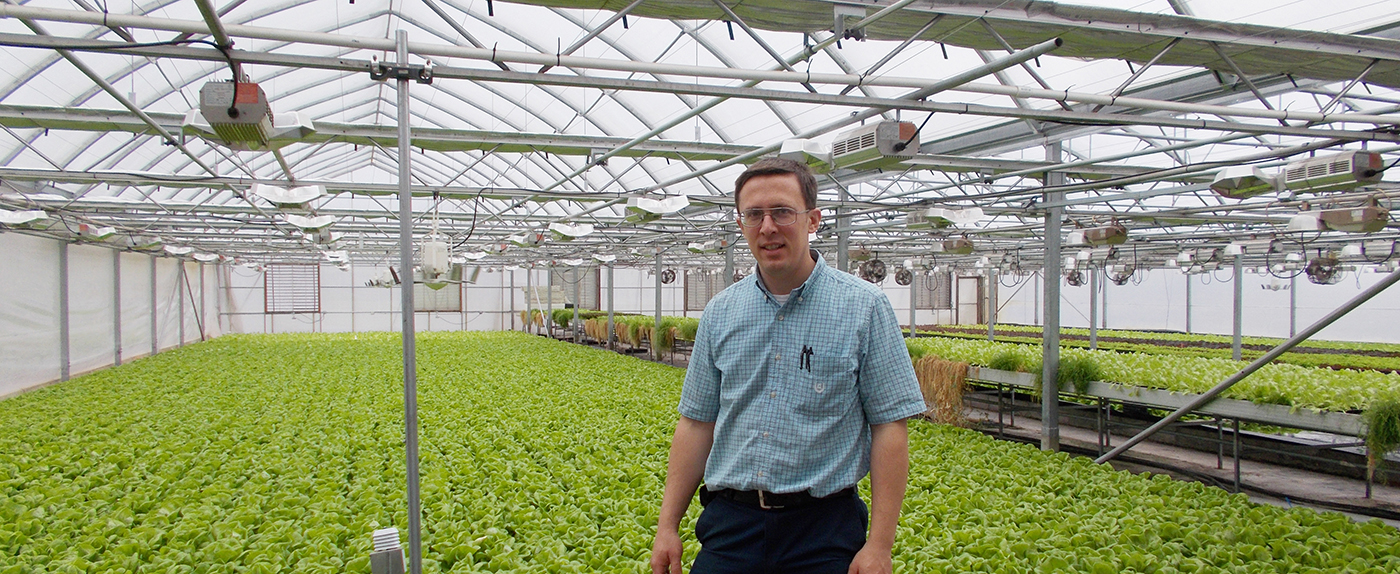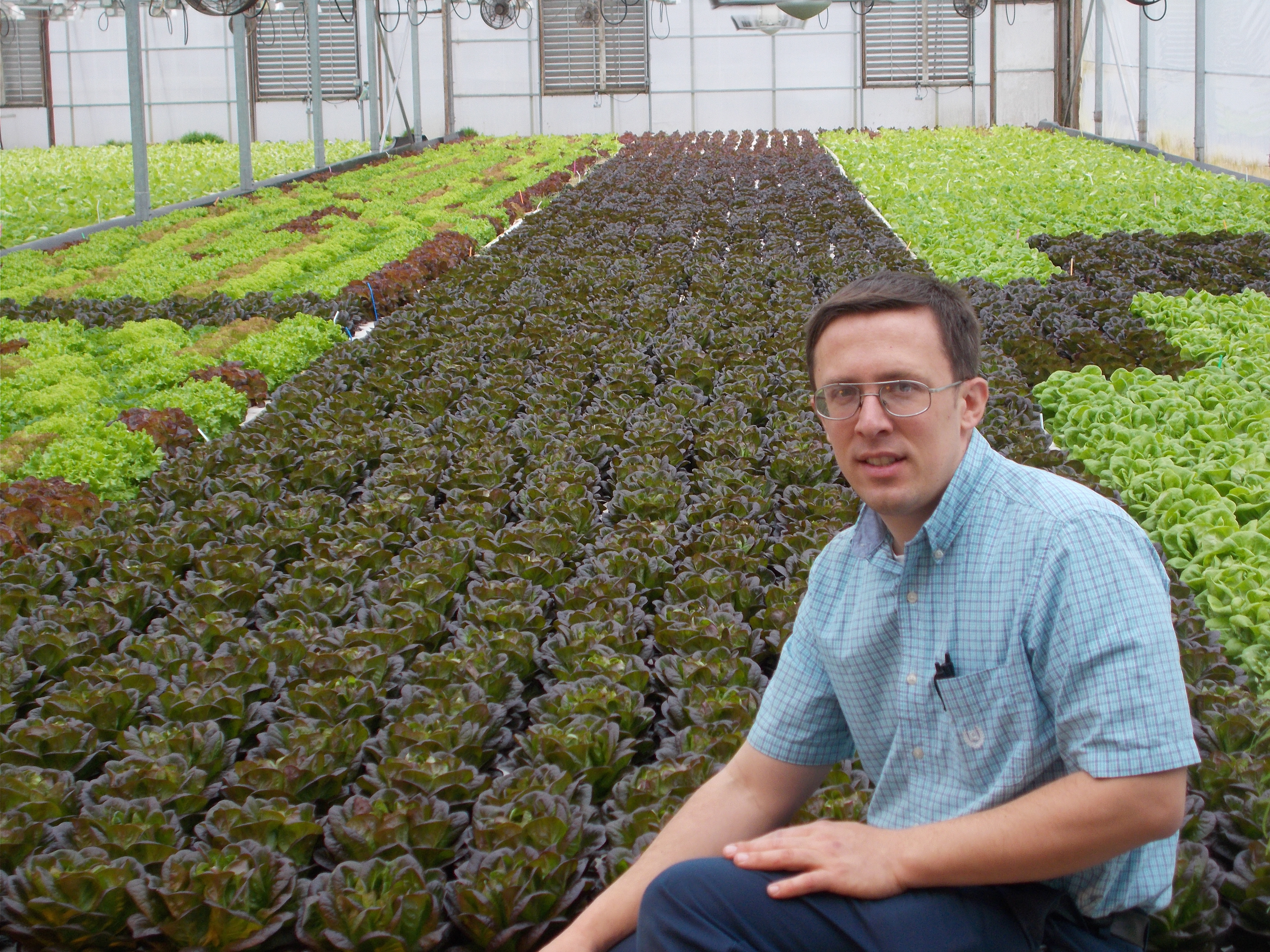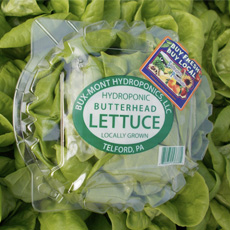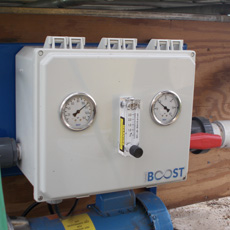
Bux-Mont Hydroponics uses supplemental oxygen, insect screening and the right substrates to produce GAP-certified, locally-grown lettuce and basil
Case File Facts
COMPANY
Bux-Mont Hydroponics LLC
LOCATION
Telford, Pennsylvania
CROPS
Lettuce and basil
TECHNOLOGY
- Moleaer Nanobubble Generator
- Grodan rockwool
- Econet insect screening
BACKGROUND
Tim Gehman, co-owner of Bux-Mont Hydroponics, began growing hydroponically in his father’s greenhouse in 2005.
“My dad was growing ornamental plants and I started growing lettuce hydroponically using a floating raft system in a corner of his greenhouse,” Gehman said. “I had seen other growers producing lettuce hydroponically and wanted to give it a try. In 2008 I started my own operation with 3,600 square feet of greenhouse production.
“In 2011 we acquired Bux-Mount Hydroponics from another grower. We purchased the company name, UPC bar codes and about 6,000 square feet of greenhouses and production equipment that we moved to our location. We now have just over 25,000 square feet of greenhouse production. We are adding a new 3,600-square-foot greenhouse this spring that will be equipped with floating rafts.”
The previous owner of Bux-Mont had been growing basil in nutrient film technique (NFT) troughs, so Gehman started to produce basil along with the lettuce he was growing in floating rafts.
The lettuce and basil, which are USDA GAP-certified, are sold with the roots attached. Bux-Mont’s main customers are grocery stores along with several food distributors in the Philadelphia area. Most of its customers are within a 50-mile radius of the operation.
“GAP certification is a requirement of our customers,” Gehman said. “It’s not voluntary. Our retail customers wanted us to be GAP certified. We are dealing with a large supermarket chain and several independent grocery companies that have several stores. Some of these are smaller co-ops that operate local grocery stores. We also sell to some farm market stores.
“Our grocery store customers are more interested in locally-grown than in certified organic. Some stores promote the locally-grown products that they offer. That is a big help for growers like me who are selling to those markets. Most average consumers don’t really understand what is involved with organics. Some think that organic produce is never sprayed and that’s not the case.”

“Prior to installing the Moleaer Nanobubble Generator we were experiencing a 10 percent loss of lettuce due to root rot. The oxygen generator eliminated our root rot problems.”
– Tim Gehman, co-owner of Bux-Mont Hydroponics LLC


CHALLENGE
Being able to supply GAP-certified lettuce and basil, Gehman is very aware of having to grow, harvest and pack clean, healthy produce. Growing lettuce year round can be a challenge, particularly during the summer with warmer temperatures. Pests, especially aphids and thrips can also be an issue. Gehman said monitoring the water temperature and scouting for diseases and insects are an important part of growing clean, healthy plants.
SOLUTION
Gehman started using Econet insect screening, which he purchases from Hort Americas, on all of the greenhouses because of the high insect pressure.
“We installed the insect screening even before we started doing GAP certification,” he said. “Aphids and thrips are the main pest problems. In the spring when the insects come out in full force, we have to have some way to keep them out of the greenhouses and the insect screening has proven to be very effective. When we have a dry summer and the grass dries out, thrips can be a major problem.
Gehman is also using a banker plant system for controlling aphids. Aphids tend to prefer lettuce more than basil.
“Aphids are the primary pest we have to deal with,” he said. “We have been using grass banker plants to establish a population of rye grass aphids, which is a food source for the aphid parasitoid Aphidius colemani. A. colemani controls green peach aphids and melon aphids. We have very few aphid problems.”
Gehman is using a stabilized peat-based propagation medium to germinate the lettuce. The basil is started in Grodan rockwool supplied by Hort Americas.
“We have always had better results with basil grown in rockwool,” he said. “Basil has a tendency to have more root problems and the rockwool drains better. We have never had any root disease issues with basil.”
Gehman is growing lettuce year round and says the crop can be profitable even during the summer when he is competing with local field-grown crops.
“We are using chillers on all of the deep water ponds,” he said. “These are chillers that we have built using stainless steel heat exchangers and large air conditioning units. The results are so much better with chilling the water. When we started out we didn’t have the chiller units. With the chillers we can keep the water in the ponds at 70ºF when the temperature outside is 95ºF. It’s a major difference in the water temperature and the outside ambient temperature.
“We are able to grow a good lettuce crop even during the summer. The summer is the most profitable time of the year for us. There are no light and heat costs. Sales may drop a little when the local field-grown lettuce comes in. But if it’s a hot summer the field lettuce production can be affected and our sales remain strong.”
One issue that Gehman faced when growing lettuce was losses due to Pythium root rot.
“Even with chilling the water we were still having issues with Pythium,” he said. “Not as much in the summer as during the late spring.”
In July 2018 Gehman worked with Kyle Barnett at Hort Americas to install a Moleaer Nanobubble Generator to supply supplemental oxygen to the pond water.
“Prior to installing the Moleaer generator we were experiencing a 10 percent loss of lettuce due to root rot. The oxygen generator eliminated our root rot problems with lettuce. The generator, which produces very small bubbles, can provide enough oxygen for all four ponds.”

Photos courtesy of Bux-Mont Hydroponics

BENEFITS
Installing insect screening, using the right substrate for the crops he’s growing and installing the Moleaer Nanobubble Generator has enabled Tim Gehman to grow clean, healthy GAP-certified lettuce and basil crops.
“Installing the insect screening along with our banker plant system, we have not had to purchase any additional biological controls,” he said. “We also very rarely have to spray with any pesticide. We have it, but we rarely have to use it.
“The Moleaer oxygen generator took care of all of the root rot issues with our lettuce crops. Adding the oxygen to the water also had a positive effect on the lettuce by speeding up its growth. Days to harvest for the lettuce was shortened when the oxygen was added to the pond water. We have been using the generator even during the winter. The added oxygen really helps and we plan to use it continuously.”
For more: Hort Americas, infohortamericas@gmail.com

You must be logged in to post a comment.